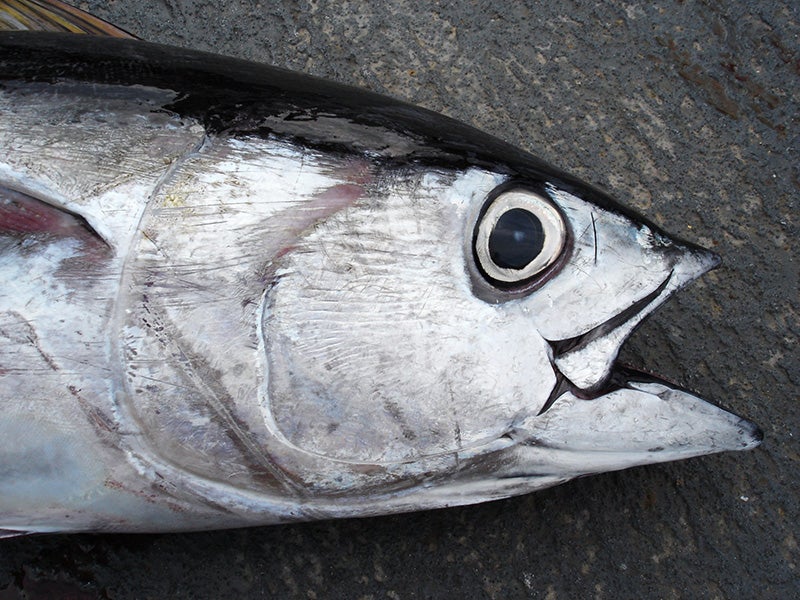Ignoring International Limits, U.S. Expands Fishing for Declining Bigeye Tuna
Rule published today in Federal Register
Contact
The National Marine Fisheries Service today issued regulations allowing Hawai‘i-based longline fishermen to ignore international agreements and continue fishing for bigeye tuna after reaching the cap allowed for U.S. fishing vessels. Highly valued for sushi, bigeye tuna has been increasingly in demand for the past decade; meanwhile scientists have sounded the alarm over unsustainable fishing levels and declining populations.
The rule was published today in the Federal Register.
“Bigeye tuna are in serious trouble, and this rule only makes it worse. Not only will these tuna pay the price, but so will the whales, dolphins and other animals that get caught on their hooks,” said Catherine Kilduff with the Center for Biological Diversity. “International limits were put in place for a reason, and this rule is simply a cynical workaround to allow fishing to go right ahead even though the limit’s already been caught.”
Today’s rule, which implements an amendment to the Fishery Ecosystem Plan for Pelagic Fisheries of the Western Pacific Region approved earlier this year (Amendment 7), dodges quotas intended to prevent overfishing by creating a separate quota for “U.S. Pacific Territories” and then allowing that quota to be transferred to Hawai‘i-based fishermen who neither fish in territorial waters nor land their catch in the territories.
“The United States should set an example for responsible fishing, not make a mockery of international protections for imperiled bigeye tuna that it agreed to less than a year ago,” said David Henkin, a staff attorney at Earthjustice. “If we want future generations to have fish to eat, the United States needs to live up to its commitments and limit bigeye catch by longline fishers flying the U.S. flag, wherever they fish.”
Bigeye tuna, warm-blooded predators similar to endangered bluefin tuna, swim in deep waters around Hawai‘i and across the Pacific Ocean. Currently at their lowest historical levels, bigeye tuna have been experiencing overfishing since the 1990s. From 1996 to 2008, the number of longline hooks set in Hawai‘i fishing grounds increased fourfold. On top of fishing stress, climate change threatens to warm ocean waters in a way that could kill off Pacific bigeye by century's end.
“With thousands of dangling hooks on lines stretching up to 60 nautical miles long and 1,150 feet deep, Hawai‘i’s deep-set longliners create a curtain of death across huge swaths of the ocean, indiscriminately catching large amounts of other marine life along with the targeted bigeye tuna, including humpback and sperm whales, false killer whales, dolphins, sharks and seabirds,” said Marjorie Ziegler, executive director of Conservation Council for Hawai‘i. “The Fisheries Service should not be looking for ways to expand this extraordinarily wasteful fishery, which discards about 40 percent of the fish it catches.”

Additional Resources
About Earthjustice
Earthjustice is the premier nonprofit environmental law organization. We wield the power of law and the strength of partnership to protect people's health, to preserve magnificent places and wildlife, to advance clean energy, and to combat climate change. We are here because the earth needs a good lawyer.